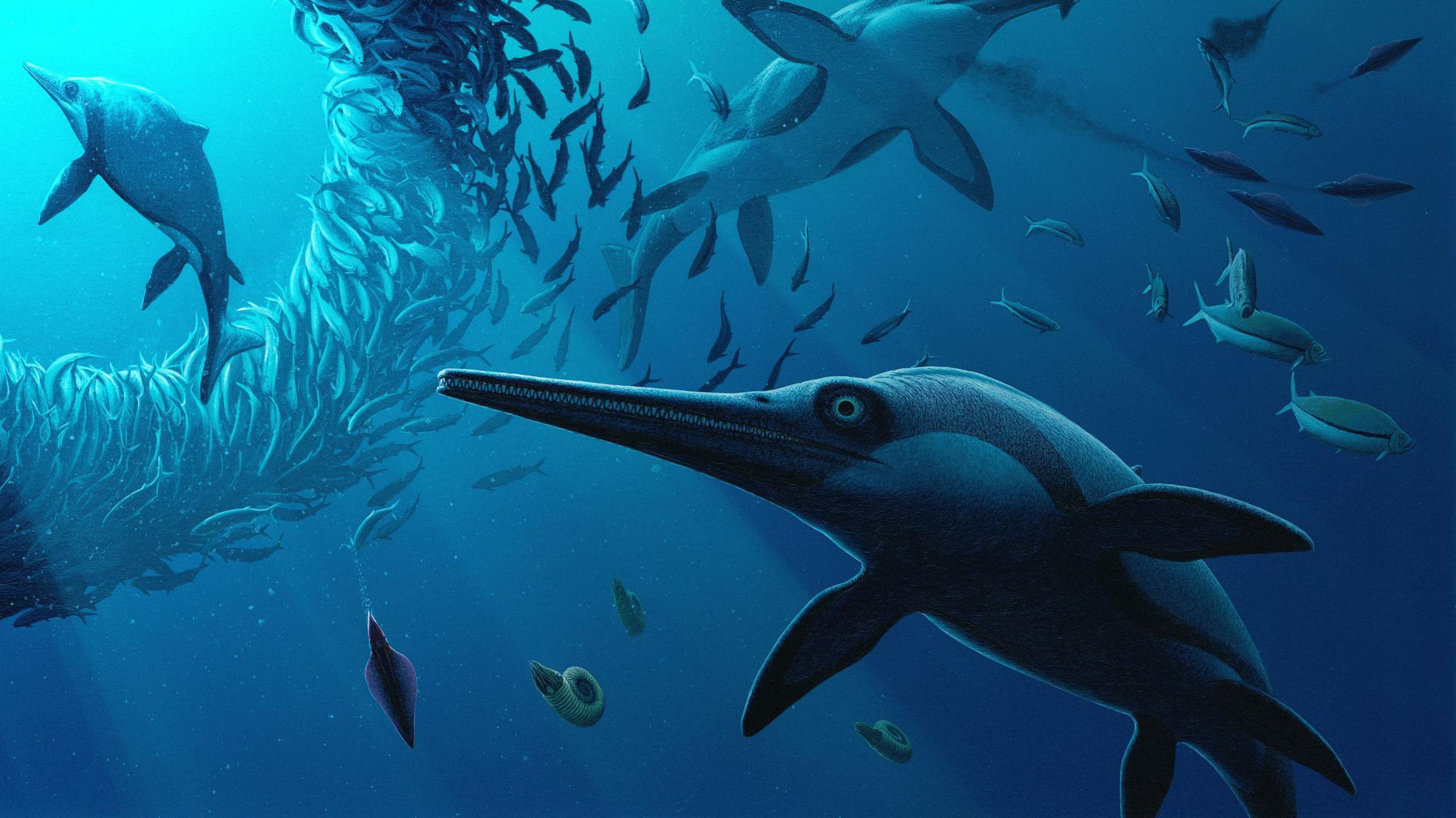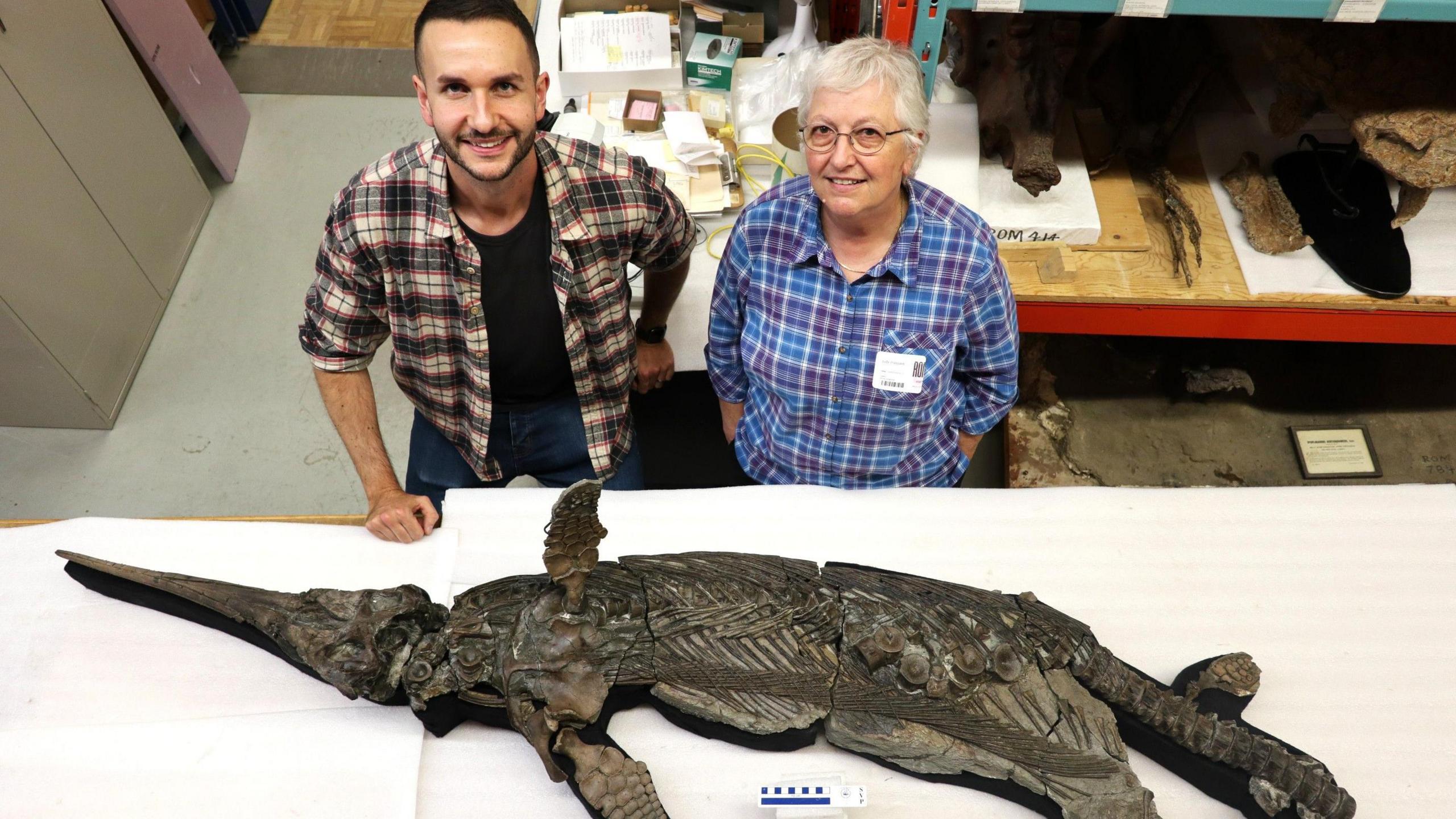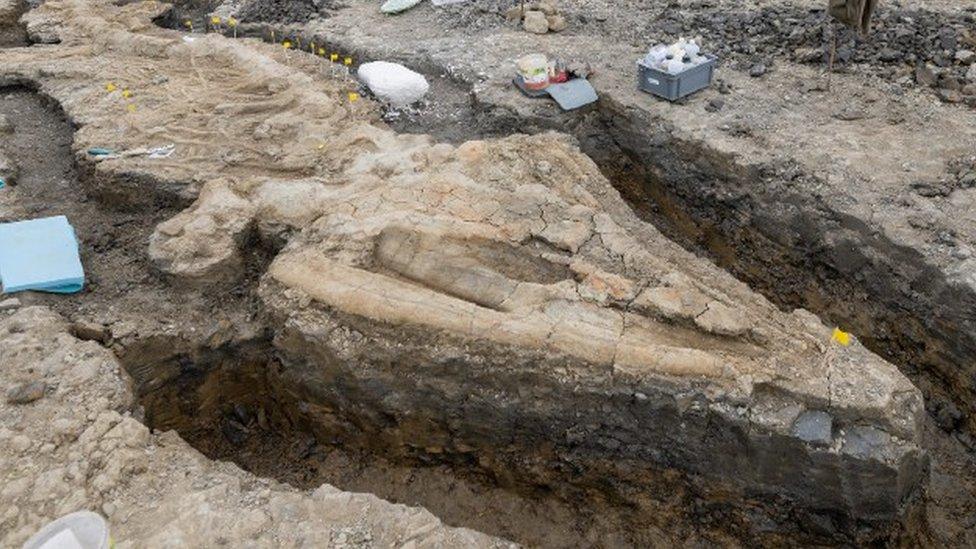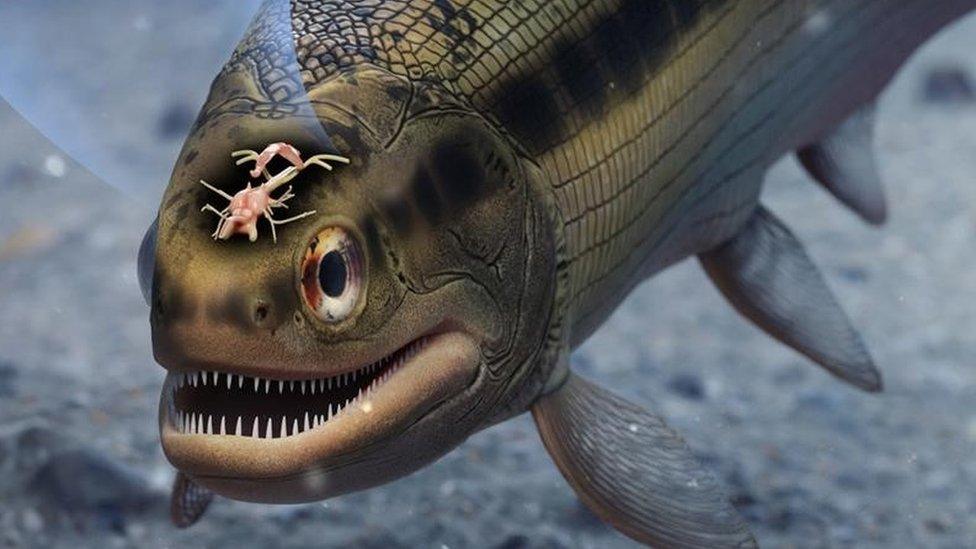Rare 'Sword Dragon' dinosaur named after 24 years

The marine reptile is thought to have lived between 193-184 million years ago
- Published
Researchers have finally discovered the true identity of a huge dinosaur which lived in the seas hundreds of millions of years ago.
The team at the University of Manchester has been looking at an ichthyosaur fossil which was found on the south-west of England's Jurassic Coast in 2001 and have named it xiphodracon, which means "sword dragon".
The marine reptile was believed to have lived between 193-184 million years ago, during the Pliensbachian stage of the Early Jurassic era.
The University of Manchester described the xiphodracon as "a missing piece" from the ichthyosaur evolutionary record.
"I remember seeing the skeleton for the first time in 2016," said Dr Dean Lomax, from the University of Manchester.
"Back then, I knew it was unusual, but I did not expect it to play such a pivotal role in helping to fill a gap in our understanding."
Unanswered questions
Dr Lomax added: "This time is pretty crucial for ichthyosaurs as several families went extinct and new families emerged, yet xiphodracon is something you might call a missing piece of the ichthyosaur puzzle."
The fossil, found near Golden Cap, Dorset, includes a skull with enormous eye socket and a long sword-like snout.
Scientists said the xiphodracon would have been about 10ft (3m) long and would have eaten fish and squid.
It is believed to be the world's most complete prehistoric reptile from the Pliensbachian period.

Dr Dean Lomax and Professor Judy Massare have both been working to identify the skeleton
Prof Judy Massare, an ichthyosaur expert from State University of New York, praised the update but said there were still questions around the ichthyosaur species.
"Thousands of complete or nearly complete ichthyosaur skeletons are known from before and after the Pliensbachian.
"Clearly, a major change in species diversity occurred sometime in the Pliensbachian."
She added: "Xiphodracon helps to determine when the change occurred, but we still don't know why."
Dr Lomax, whose new book The Secret Lives of Dinosaurs has been endorsed by the Guns N' Roses guitarist, Slash, said: "One of the coolest things about identifying a new species is that you get to name it.
"We opted for xiphodracon because of the long, sword-like snout, and dracon in reference to ichthyosaurs being referred to as 'sea dragons' for over 200 years," he said.
He explained the "xipho" portion of the title has been taken from the Greek word for sword, xiphos, and "dracon" comes from the Greek and Latin word for dragon.
Get in touch
Tell us which stories we should cover in Greater Manchester
Listen to the best of BBC Radio Manchester on Sounds and follow BBC Manchester on Facebook, external, X, external, and Instagram, external. You can also send story ideas via Whatsapp to 0808 100 2230.
- Published16 January 2022

- Published2 February 2023
